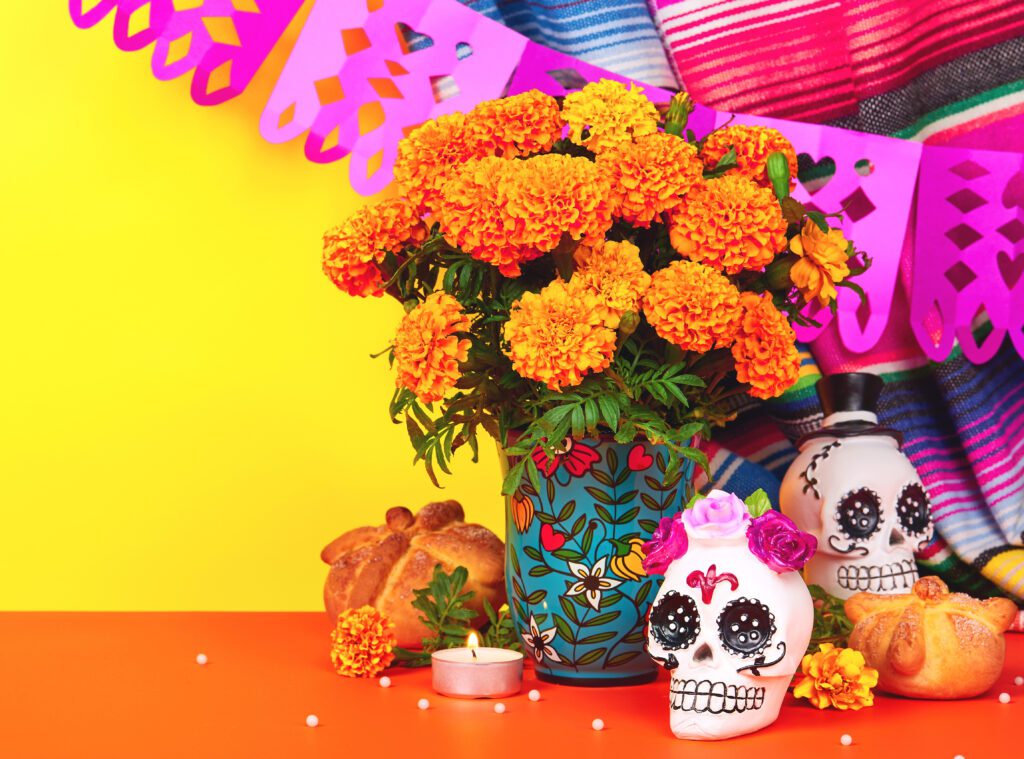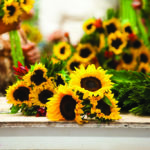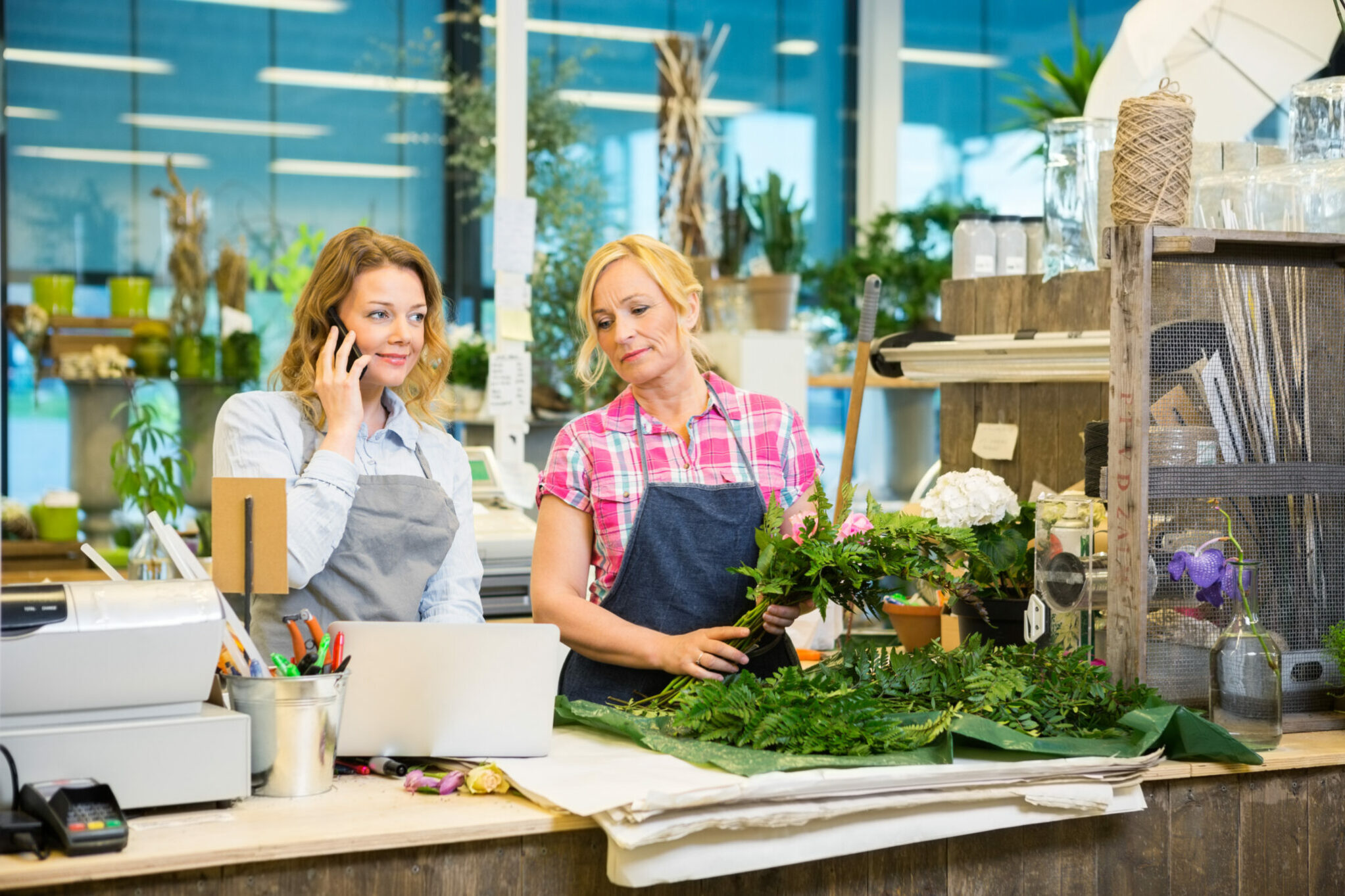
When U.S. florists think of popular flower holidays, Valentine’s Day and Mother’s Day logically come to mind. One cultural holiday that doesn’t get as much attention is Dia de los Muertos. Flowers play an important role in this fall festival. Learn more about it, how flowers are used, and how florists can cater to customers who celebrate.
Dia de los Muertos, or Day of the Dead, is a multi-day celebration that honors the dearly departed. It is rooted in ancient Aztec traditions, commemorating a time when spirits return to the land of the living to visit with their loved ones and descendants. The primary celebratory days are Nov. 1 and 2, but many people extend their holiday-related activities to the surrounding days.
The primary flower used is cempasuchil, a marigold native to Mexico. The vibrant orange flower has a strong scent that is said to attract spirits. To help guide them, some celebrants create trails of petals leading to the altar.
Flower sales tied to the celebration have been increasing the past few years. At Texas Specialty Cut Flowers, a farm in Blanco, Texas, sales of marigolds have skyrocketed by 1,400% in 10 years, says owner Frank Arnosky.
“We are growing more marigolds than ever,” he says, adding that marigolds are also used in other celebrations, such as Diwali, births, and weddings. “The market is huge and largely underserved.”
Last year in Houston and Dallas, the Bill Doran Company “sold full semi-tractor trailer loads of marigolds,” San Antonio branch manager Scott Jewett has said.
Angélica Rivera Varela, owner of Semillas Plant Studio in a predominately Latino neighborhood in Chicago, says her Dia de los Muertos floral sales rival Valentine’s Day and Christmas sales.
Varela’s shop processed more than 1,000 orders for cempasuchiles last year. She sells bunches of the fresh or dried flowers so customers can use them to build their own altars, or ofrendas, which are decorated with flowers, candles, food, water, incense, and paper cut-outs, each with its own significance. In addition, she creates bouquets incorporating cockscomb celosia — another popular flower for Dia de los Muertos — or black roses.
Her shop also installs a community ofrenda. Customers are invited to add photos of their deceased loved ones.
While the holiday is celebrated mainly by people of Mexican origin or descent, such as Varela, it is also celebrated by other Hispanics in the Americas.
According to the Pew Research Center, there are 37 million people of Mexican heritage living in the United States. While there are large Mexican populations in states such as Texas and California, they are spread throughout the country in almost every community. Varela says it’s important for those who celebrate Día de los Muertos to have access to cempasuchiles no matter where they live. That can be difficult when many florists don’t think to carry them in the days leading up to the celebration.
“It’s not something you think about if you don’t practice it,” Varela says. “I grew up with this culture. Me being Mexican and my husband being Puerto Rican, this was a holiday we practiced when we were younger.”
Varela encourages her peers to learn about the holiday and the flower’s importance so they can cater to its celebrants in a way that is respectful. Selling loose stems, for example, allows customers to decorate ofrendas. And selling them at a reasonable price ensures everyone can afford them, Varela says.
“I think it’s really important to be really mindful that this is a sacred flower,” she says. “Respectfully, just really honor what the flower is about and what it means to the people who are purchasing them.”
Laurie Herrera is a contributing writer for the Society of American Florists.






